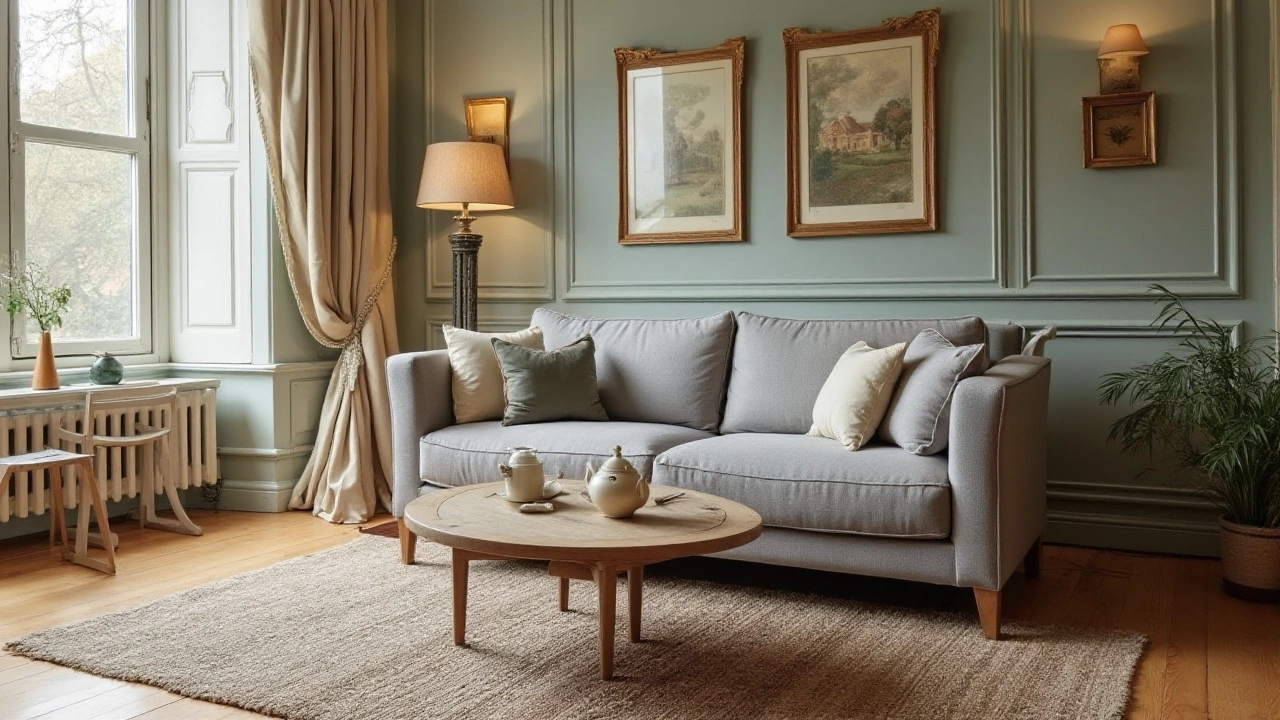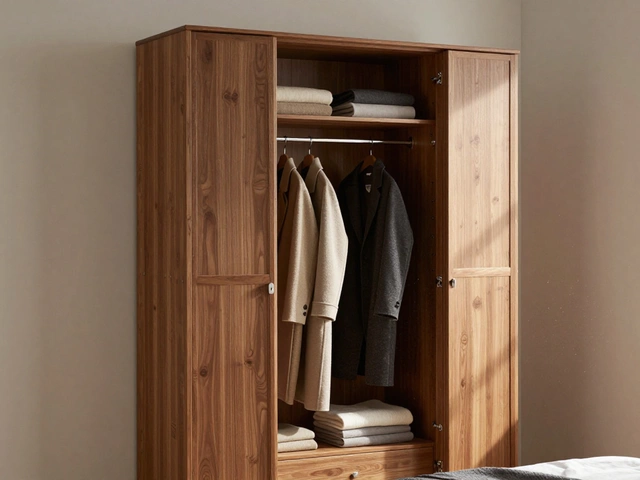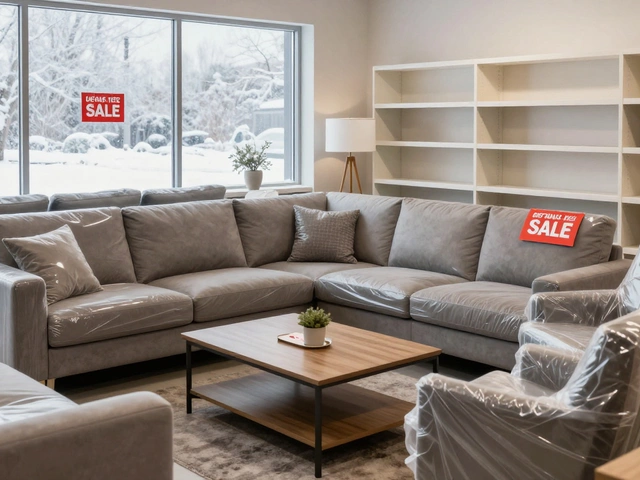In the world of interior design, rules are meant to guide, not confine. Among these guidelines is the 2/3 rule, a time-tested principle that helps homeowners and designers alike to arrange their living spaces with grace and proportion. The idea is simple yet powerful: your sofa should fill roughly two-thirds of your available space in a room, allowing for a balanced distribution of furniture and decor.
This approach ensures not only aesthetic balance but also functional harmony, making sure the room doesn't feel cramped or empty. Its simplicity is why it perennially resonates with those honing their home environments. As we delve deeper, let's explore how the 2/3 rule can transform your living room into a sanctuary of sophistication and comfort.
- What is the 2/3 Rule?
- Why the 2/3 Rule Matters
- How to Measure Your Space
- Choosing the Right Sofa
- Integrating with Room Decor
- Tips for Successful Arrangement
What is the 2/3 Rule?
The 2/3 rule emerges from the philosophies of design where harmony and proportion govern the aesthetics. Essentially, this rule suggests that when selecting a sofa for your living room, it should ideally occupy two-thirds of the available wall length or the room's breadth. This isn't merely about dimensions; it's about creating synergy within the room, allowing the furniture to naturally integrate with the space it inhabits. By adhering to this rule, homeowners often find a balance that isn't just visually appealing but also operationally efficient.
Consider the story of an architect who revolutionized contemporary living space layouts - Frank Lloyd Wright. Though perhaps not directly quoted as a proponent of the 2/3 rule, his designs mirrored the principle of proportional harmony. As he famously remarked,
"Space is the breath of art."This ideal aligns seamlessly with the 2/3 rule's ethos, aiming to breathe life into a room by preventing overcrowding while maximizing utility.
When employing this principle, the advantages are numerous. Firstly, it leaves ample room for other essential furniture pieces without disrupting spatial fluidity. You get enough room for side tables, lighting, and even decorative items without impeding movement or congesting the area. The notion of negative space, often a feared term in design, is your ally here. It offers breathing room, making the environment feel expansive rather than cramped, instilling a serene ambiance in what's frequently the busiest room of a home.
Visualizing the Rule
To better grasp the 2/3 rule, let's visualize an average living room being 18 feet in width. Applying the rule, your ideal sofa set would span approximately 12 feet. This isn't a strict measurement but a guideline that molds to the room's dynamics. The concept broadly applies across various types of spaces, be it more confined urban apartments or sprawling country homes. As patterns of living evolve, so too does the adaptability of the 2/3 rule, ensuring it remains relevant and invaluable.
Embracing this standard doesn't mean your living room will mirror that of a neighbor's. Every room has its distinct personality, and the furniture should embody that individuality. While you aim for a sofa proportionate to your room, think about personal elements like color, texture, and style that resonate with your home's overall design language. The 2/3 rule is a foundational guide to begin with, inviting homeowners to personalize and expand upon it creatively.
Why the 2/3 Rule Matters
Design is an art and a science, and the 2/3 rule beautifully bridges this divide. It matters because it provides a harmonious balance between space and furniture, optimizing the flow and usability of a room. The principle, which suggests the sofa should occupy around two-thirds of the available room space, serves multiple purposes. A living room adhering to this rule often feels more spacious and inviting. The human eye tends to be drawn to balance and symmetry; thus, the 2/3 rule creates a visual equilibrium that is naturally pleasing.
To put it in perspective, think about entering a room where all elements seamlessly fit together—nothing feels forced or out of place. This is precisely the feeling the 2/3 rule aims to cultivate. By maintaining this proportion, you ensure that there is ample room for movement, an essential component in making sure a space is both liveable and comfortable. It avoids the pitfalls of overcrowding, which can make a room appear smaller and more chaotic than it actually is.
From a practical standpoint, this rule acknowledges the broader spatial dynamics. When adhered to, it leaves adequate room for additional elements, such as accent chairs, coffee tables, and side tables, without the space feeling cramped. It caters to efficiency as well; your living room design should not only be about aesthetics but also about functionality. The flexibility inherent in this rule can accommodate a variety of layouts and styles, whether you're going for a minimalist look or a more lavish, eclectic mix.
"The soul of a room is reflected in its layout, and the 2/3 rule serves as its gentle compass," noted renowned interior designer Elaine Shields, highlighting the intuitive simplicity yet profound impact of this guiding principle.
Interestingly, the 2/3 rule does not just apply to sofas but can be extended to other furniture and decor elements. For instance, a rug following this guideline in relation to a living area's seating arrangements can tie the room together cohesively. This rule can guide the height proportion of artwork and shelving units related to wall height, creating continuity and ease for the viewer. In essence, this isn't merely about setting rules but about facilitating an understanding of proportion and flow, which are pivotal in design aesthetics.
Consider the statistics around room dimensions in urban apartment settings. According to a 2023 study by Home Space Analytics, an average living room in newly constructed city apartments typically ranges from 200 to 300 square feet. Applying the 2/3 rule, a sofa measuring approximately 11.5 to 12.5 feet (138 to 150 inches) would be optimal in such scenarios. This strategic planning not only maximizes available space but also enhances usability, ensuring that occupants can move around freely.
Another compelling advantage of the 2/3 rule is its innate adaptability. Whether you are working with a traditional layout or a more contemporary setting, the rule adjusts intuitively. Its versatility makes it an invaluable tool for both seasoned designers and novices looking to enhance their living spaces. As you ponder your next home decor arrangement, consider how the simplicity of the 2/3 rule might lead to grandeur in design.
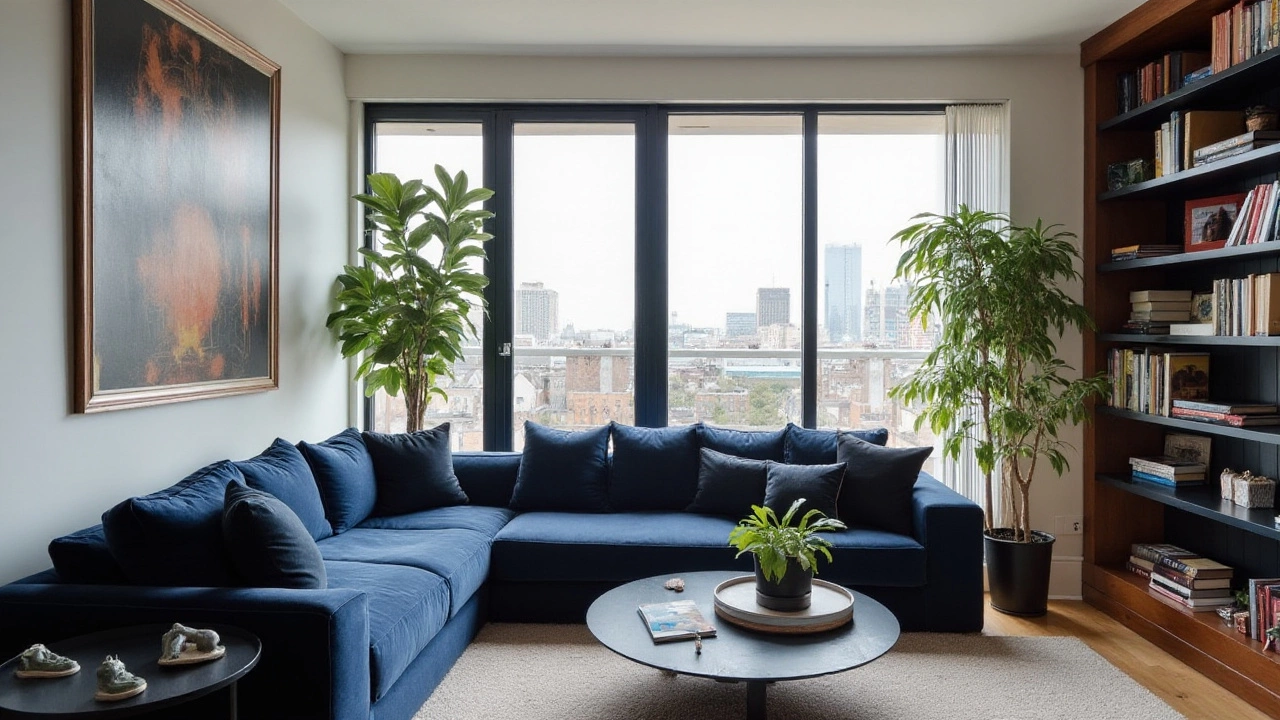
How to Measure Your Space
Starting a living room design by determining the right sofa size based on the 2/3 rule can make a significant difference in space utilization and comfort. The first step is accurately measuring your room to ensure the sofa sets you choose align well with both dimensions and aesthetics. While grabbing a tape measure might seem trivial, this small action sets the stage for a mesmerizing transformation. Visualize the room completely empty, trying to see where your chosen sofa will reside. This imagining allows you to understand the flow and feel of the space before any measurements even begin.
Using a tape measure, start at one endpoint of the room and stretch it to the opposite side, capturing both length and width meticulously. This total room dimension is critical. Don’t forget ceiling height, since it’s part of the ambiance, affecting furniture scale. Divide this length by three to obtain the maximum size for your sofa; remember, this sofa should ideally occupy no more than two-thirds of the room’s available space. Such careful measurements lead to a living area that is neither overcluttered nor underfurnished.
Considering the flow of movement is essential. Ensure that there is adequate space around the potential sofa area for walking and other furnishings. Practically, leave at least 18 inches between the sofa and coffee table, 30 inches for walkways, and more if children or pets meander around! Additionally, think about any architectural features like windows or fireplaces that could influence placement and seating direction. These elements shouldn’t be obscured or difficult to access.
The room’s purpose should color this decision too. For instance, if you often host movie nights, positioning for a good view of the screen is paramount. Contemplate natural lighting when setting down your measurements. It's said that sofas should face the light to create an inviting aura, tapping straight into the harmony that the 2/3 rule emphasizes. Lighting sets the mood, often described by interior designers as a ‘natural allure-maker.’
“While a tape measure aids in laying the foundation, your imagination determines the final artistry,” noted designer Emily Henderson, emphasizing balance not just by numbers but through an artistic lens.
Balancing utility and style with this approach enriches the area while adhering to simplicity. So grab your tape, define those boundaries, hone your decor eye, and step closer to creating that perfect balance in your living room environment.
Choosing the Right Sofa
Finding the perfect sofa is like discovering the heart of your living room. It's not just about looks; it's about blending form with function. The 2/3 rule can guide you in selecting a sofa that not only fits your space but also complements your style. Start by measuring the area where your sofa will be placed. Consider doorways and hallways to ensure a smooth fit. Sofas come in various styles and sizes, from loveseats to sectionals, so it's important to think about the purpose of your room and how you'll use the space. Will it be a cozy nook for reading or a social hub for entertaining? The answers will help define your choice.
When pondering over the diverse range of styles, remember that the sofa is a substantial investment. It’s worth considering timeless designs that withstand fluctuating trends. Another critical factor is the fabric. Leather exudes a classic aura, though it might not be ideal for households with rambunctious pets or young children. Conversely, microfibers offer durability against spills and scratches, making them a popular choice for families. Pay attention to the cushion fill as well. Foam cushions may offer affordability but can flatten over time. Feather or down fills provide luxurious comfort and shape retention, bringing an enduring plushness to your relaxation moments.
The sofa’s color is crucial too. Neutral tones provide a canvas that adapts to various decor styles, while bolder hues can make a statement or reflect your personality. Always consider your room's existing color palette and the emotions you want to evoke. To harmonize a vibrant interior, a neutral sofa could be the anchoring element you need. Alternatively, a colorful sofa can infuse vibrancy into a monochromatic room. Decorating experts often recommend obtaining fabric swatches before making a purchase to observe how different textures and shades interact with natural and artificial light throughout the day.
When arranging the couch, some designers emphasize functionality and space maximization. Placing the sofa at an angle or floating it away from walls can create cozy conversation zones or define an open floor plan. Add complementary pieces like ottomans or side chairs to maintain fluidity and flexibility in the arrangement. Renowned decorator Nate Berkus once said,
“Your home should tell the story of who you are, and be a collection of what you love brought together under one roof.”This philosophy underscores the importance of choosing a sofa that's not just functional, but also genuinely reflects your personal style.
Finally, before sealing the deal, consider the construction. A sturdy frame ensures longevity; hardwood frames, typically made from beech, oak, or ash, offer great durability. Inspect joints, ensuring they are secured with screws or dowels rather than staples alone. A well-crafted sofa is as much an investment in your home's comfort as it is in your quality of life. In the long run, the right sofa will not only adhere to the 2/3 rule sofa but also serve as the optimal blend of style, comfort, and practicality tailored to your specific needs.
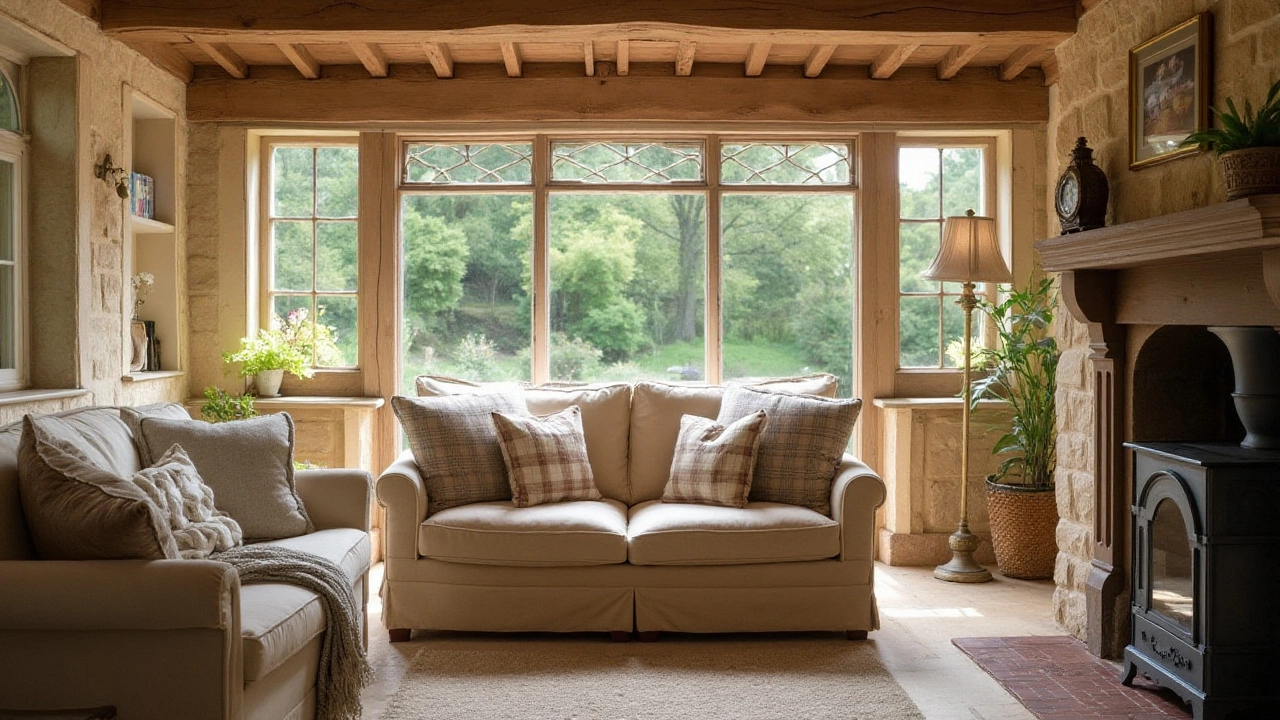
Integrating with Room Decor
Designing a room isn't just about filling it with furniture; it's about creating a cohesive ensemble where every piece contributes to the overall narrative of your living space. The 2/3 rule sofa serves as a foundational anchor in this process, establishing a stage upon which the rest of your room decor can shine. By selecting a sofa that adheres to the two-thirds guideline, you lay down a visual equilibrium, providing an inviting focal point around which other elements can comfortably revolve. The beauty of this rule lies in its adaptability, allowing for both creativity and order to coexist, offering the perfect blend of style and substance.
Color harmonization plays a crucial role in integrating your sofa with the room's decor. A neutral-toned sofa, for instance, can serve as a versatile canvas that allows for bold color accents in cushions, throws, and nearby artwork, while a vibrant sofa might serve as a statement piece, dictating the minimalist tones of the walls or carpets. This interplay between colors and textures is essential in cultivating an environment that feels personalized and balanced. As the design legend, William Morris, once said,
"Have nothing in your house that you do not know to be useful, or believe to be beautiful."Embracing this ethos can guide your choices, ensuring that each decor element supports and highlights your chosen sofa sets.
Furniture arrangement is another pivotal aspect of integration. Consider incorporating various seating options that complement your sofa's design and color palette. Create a symmetrical layout with armchairs flanking the sofa or an asymmetrical design with a singular statement chair or a sleek coffee table. The choice of fabrics and materials—be it leather, linen, or velvet—can echo or contrast with existing decor elements, adding layers of character and continuity throughout the space. Such thoughtful arrangements serve not just a visual purpose but also transform the functional dynamics of the room, promoting ease of movement and interaction.
Lighting, too, shouldn't be overlooked when aligning your sofa with the room's existing decor. Natural light can highlight the rich hues and textures of a fabric, whereas artificial lighting fixtures can amplify the mood. A combination of both, utilizing floor lamps or statement chandeliers, creates an inviting ambiance that heightens the space's appeal. Imagine a room where every detail speaks in harmony—where the interplay of light and shadow accentuates the contours of your furniture, drawing one into a realm of peace and aesthetic pleasure. This orchestration of elements fosters a serene atmosphere, catering to both functionality and style.
Accessorizing with intention is crucial, as these smaller elements contribute significantly to the decor's overall effect. Rugs, artwork, and vases bring in personal flair, setting the tone and enhancing your sofa’s presence. Textiles such as curtains or draperies can piece together the color scheme, offering a soft transition between the various hues in the space. Play with different textures and materials in your decor to keep the space dynamic and visually stimulating. As each piece finds its place, your room transforms from a mere collection of items into a magnificent tapestry of artful design, all circling back to that pivotal sofa set.
Ultimately, the success of any room's decor hinges on minding the smallest details while honoring the fundamental principles of design. With the 2/3 rule as your guiding star, not only is your room guaranteed to maintain its visual harmony, but it also becomes a personal retreat—a true reflection of your style and taste. It's these harmonious compositions, deriving from thoughtful integration, that make interiors both livable and striking, creating spaces that are cherished and revered every day.
Tips for Successful Arrangement
Arranging your living room with the 2/3 rule in mind offers a framework, but it also requires a touch of creativity to suit personal tastes and practical needs. Start by measuring your space carefully. Knowing the dimensions of your room is pivotal; this isn't just about ensuring your sofa sets fit, but about maintaining a fluidity that lets movement and light travel unencumbered. Consider how the 2/3 rule interacts with architectural elements like windows or doorframes as these features can amplify or compete with your sofa's presence.
Lighting plays a critical role in spatial arrangement. Position your lighting to enhance the seating area without overpowering it. A well-lit space can make even the largest living room design feel cozy. Floor lamps that arc over a sectional, or table lamps that frame a loveseat, add layers of illumination that highlight décor while maintaining a welcoming atmosphere.
Color and texture in textiles can dramatically impact how your sofa integrates with the rest of the room. Choose cushions and throws that offer a contrast or a complement to your sofa's color to create a dynamic interplay of shades. This practice pulls visual focus towards the sofa, reinforcing the 2/3 rule without dominating the entire room. As Jane Doe, a renowned interior designer, once said,
"Textiles are the jewelry of a room; they can add glitter without overshadowing."
Your arrangements can also benefit from multifunctional pieces like ottomans or storage benches, fitting well within the 2/3 principle. These items not only offer convenience but add extra layers to the room's narrative. Here, the balance of utility and aesthetics is key. A small side table beside the sofa, for instance, acts as a subtle complement without overwhelming or crowding the area.
Don’t neglect the importance of art and personal touches in your arrangement. Art should be hung at eye level, and personal items can be displayed on shelves to inject personality into the living space. Maintaining the simplicity and elegance of the 2/3 rule doesn't preclude personal expression; rather, it encourages it, within boundaries that preserve room flow.
Lastly, technology has become indispensable in modern living room setups. Incorporate your gadgets with grace. Television screens, sound systems, and charging docks can be housed neatly in entertainment centers or disguised behind beautiful cabinets, ensuring they don’t detract from the overall aesthetic harmony dictated by the 2/3 rule.

